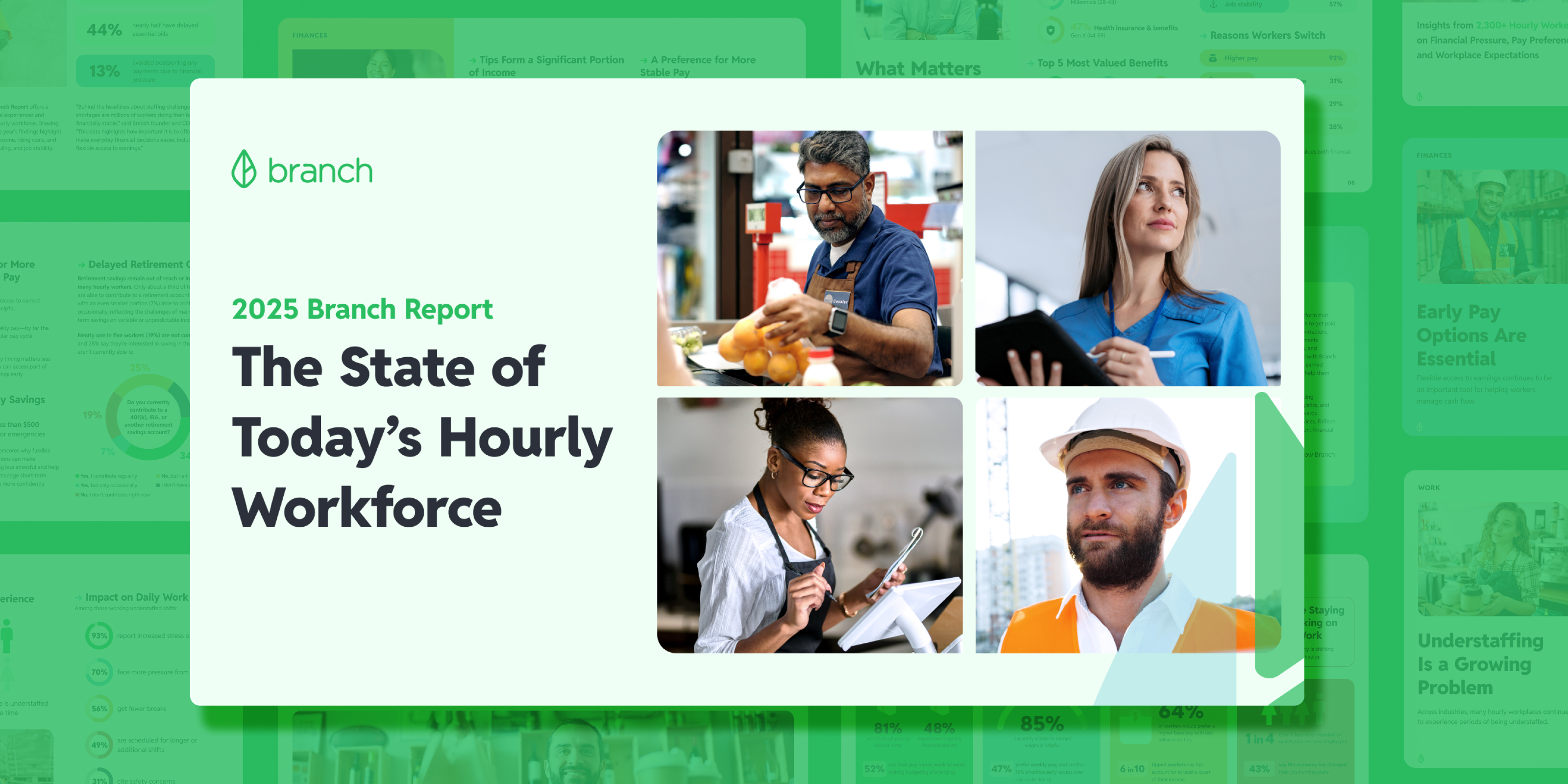
Covid-19's Impact on Hourly Workers
The coronavirus (COVID-19) is rapidly transforming workplaces, and we know that frontline employees are most affected. To better understand circumstances and how to help hourly workers at this time, Branch surveyed 700+ employees about how COVID-19 has affected their work.
Hours Reduced, Workplaces Shut Down
Workplace operations across the board have been significantly impacted for both hourly and salaried employees, with about a third of employers (33%) shutting down.
· Hourly employees are impacted at higher rates than salaried employees, with 56 percent of hourly employees experiencing reduced or unpaid leave/job loss
· Only 33% of hourly employees are maintaining the same level of pay --either through working the same number of hours or paid leave.
Industries Most Impacted
By industry, the Restaurants/Food Service employers were most likely to reduce staffing, with 82% of hourly employees in foodservice experiencing reduced hours or unpaid leave.
· Hospitality was the second highest sector, with 73% of employees working fewer hours or on unpaid leave. Hospitality was the highest sector of employees expected to return to their jobs (33%).
· Following Healthcare (24%), Retail was the highest industry for hourly employees to receive an increase in hours (15%)
Employer Support + Financial Assistance
As employers respond to changes in real-time, few can offer financial assistance to employees. Only 13% of hourly employees receive some sort of financial assistance from their employer, compared with 25% of salaried employees.
Top forms of financial assistance for hourly and salaried employees include:
· Paid Shutdown Leave (37%)
· Paid Sick Leave (36%)
· Emergency Fund (15%)
· Bonus Pay (8%)
· Other (16%)
Hourly Workers Most Concerned About Affording Groceries
Groceries were the top concern for hourly and salaried employees alike. But hourly workers, who have typically cited home/rent affordability as their top concern, have been more concerned about affording daily expenses like groceries (91%) and utility bills (76%) at higher rates than salaried workers (82% and 61% respectively).
Top Financial Concerns for Hourly Workers:
Groceries (91%)
Utility Bills (74%)
Home/rent affordability (60%)
Medical/Healthcare costs (22%)
Childcare (15%)
Autocare/Transportation (16%)
Short-term savings (12%)
School/College Tuition Debt (5%)
Retirement (2%)
Eldercare (1%)
Mixed Confidence
Employees are split on their employment on the next few months, more hourly employees are hopeful in their employment outlook over the next few months. When asked how confident they felt in employment outlook over the next 3 months:
· Confident (37%)
· Neutral (37%)
· Not Confident (26%)
Branch is working closely with employers, partner organizations, and employees to push the funds they need as quickly as possible during this difficult time. We've compiled a state by state listing of unemployment benefits and how they've been impacted COVID-19. We’ll continue to build out guides and resources with more information.
Continue reading
Unlock a Happier, More Productive Workforce







